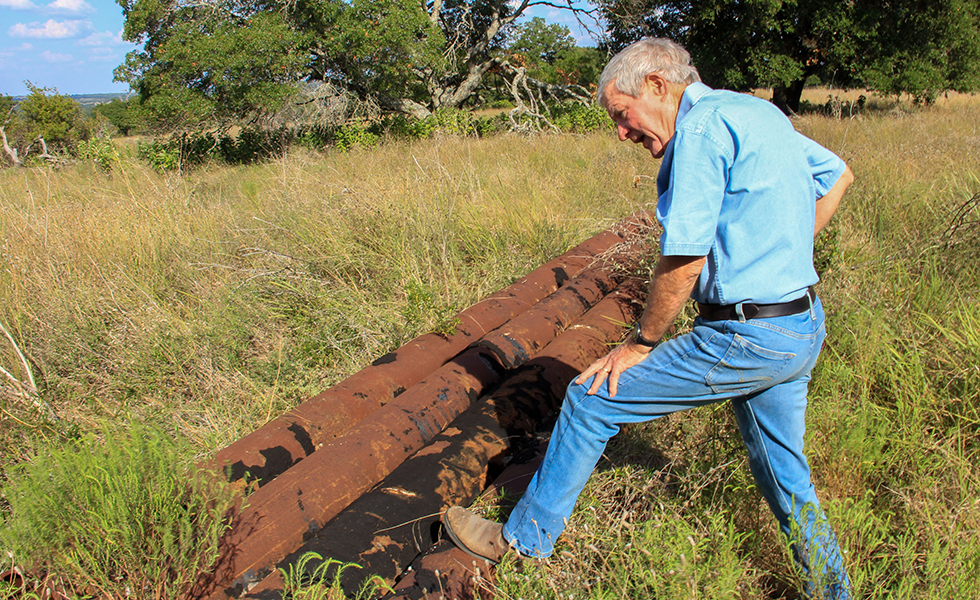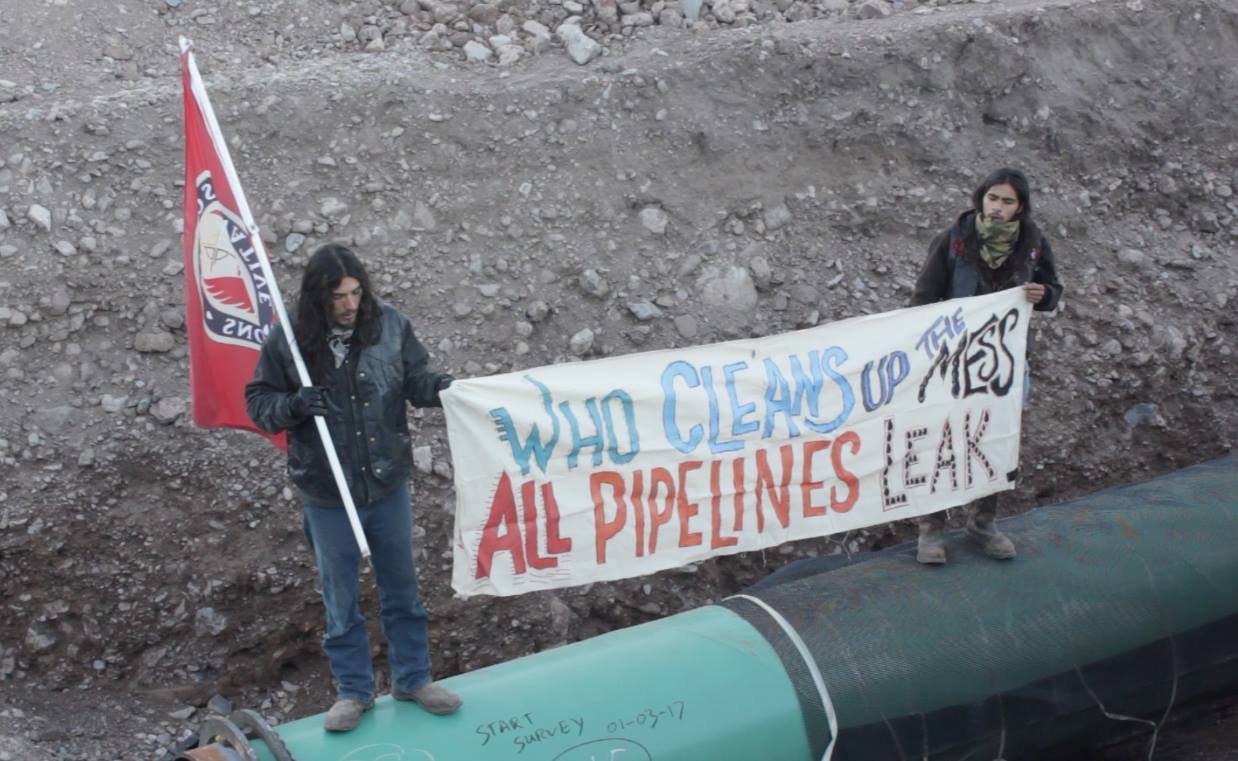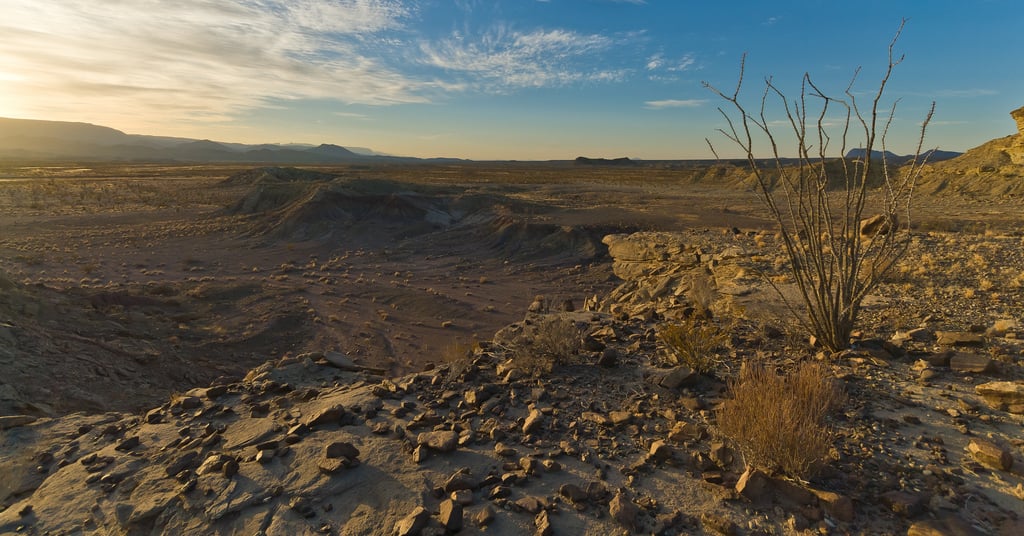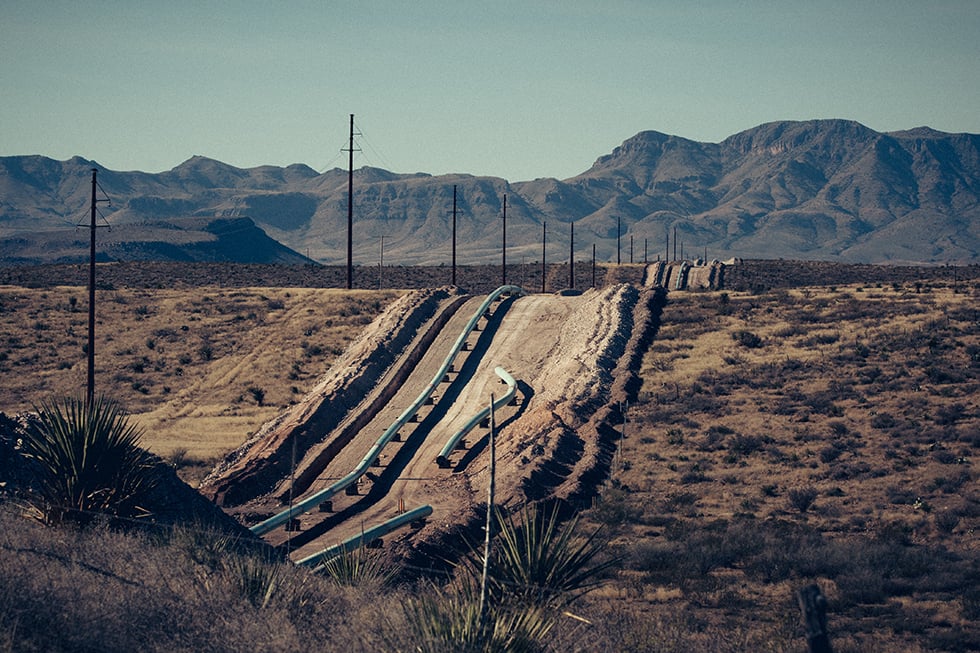
‘Trans Pecos’ Is a Beautiful Plea to Protect West Texas
This visually striking film captures the innate beauty of far West Texas and the threats posed to it by oil and gas infrastructure.
“To be part of this land,” rancher Pilar Pedersen says early on in Trans Pecos, “it’s just ephemeral. Nobody owns this land.” Living in West Texas’ Big Bend country makes her who she is, and the desert’s power humbles her. While she believes “there is such a thing as stewardship,” the land is wild, meant to run itself. “That’s why,” she explains, “when something like the pipeline comes along, you stand.”
Pedersen is one of several activists featured in Trans Pecos: The Story of Stolen Land and the Loss of America’s Last Frontier, a new documentary premiering in Austin on Sunday and in Marfa next Friday. The activists, mostly volunteers with the Big Bend Conservation Alliance, made up one wing of the opposition to the Trans-Pecos Pipeline in far West Texas. Energy Transfer Partners (ETP) started construction on the natural gas pipeline in 2015 and unleashed a wave of resistance in the area over the next two years. Protesters were unable to stop the 148-mile pipeline, which was completed in 2017 and runs from Fort Stockton to Presidio. The film’s director, longtime nature photographer Nicol Ragland, tells a tale of loss and unease as the pipeline tramples on land rights through eminent domain and endangers West Texas residents.
The interviews with activists and landowners are memorable, but the film’s best elements are its rich visual imagery and haunting musical interludes. Trans Pecos invites viewers to contemplate not just this specific tragedy, but the meaning of nature more broadly.
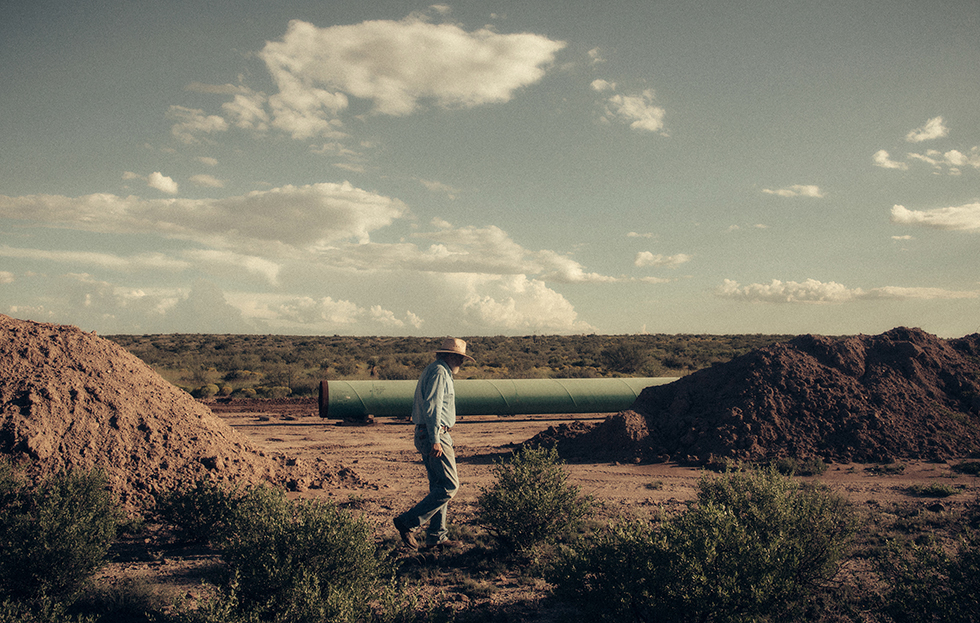
Drawing on a long tradition of films shot in the dramatic scenery of West Texas, Ragland brings her experience as a nature photographer to Big Bend. The landscape is the main character in Trans Pecos, as it should be. The mountains loom, beautiful and undisturbed in most shots, in stark contrast with montages of pipeline construction, trucks crawling along valleys, laying down infrastructure. Other shots stand out: a bushy gray cat sits on a post and watches an ominous storm roll in. Deer and cattle and wild horses roam through grasslands. Artist Johnny Sufficool holds up a rusty square of metal at his junkyard to frame the mountains of Big Bend, “the crown jewel of Texas.”
Multiple interviewees describe Big Bend country as “unspoiled,” “wild,” and “sacred.” They say they love this region because of the silence, the stars, the fact that the horizon probably looks the same as it has for millions of years. Archaeologist and activist David Keller says it outright: “This is the last best place in Texas. … We don’t have pumpjacks. We don’t have infrastructure. What we do have is minimal.” A clear ideology emerges: the belief that altering this landscape is utterly wrong. Still, Trans Pecos generally avoids hitting viewers over the head with it, instead letting the landscape speak for itself.
Meanwhile, in between wilderness shots, we’re given aerial views of the pipeline encroaching and splitting the land. We learn that elderly ranchers had their land seized by the federal government to make this happen. We hear about the billions of gallons of wasted water and the fire dangers facing communities in Alpine if the pipeline were to leak natural gas. The film fails to sufficiently convey how many Native American activists were actually involved in the resistance, but we do learn about the significance of sacred sites in Big Bend. Activist Roberto Lujan, who has Jumano-Apache ancestry, says, “This is the nesting ground, the spiritual medicine for [indigenous] people from this region.” He looks out at a stretch of the long crevasse dug for the pipeline: “Scarred.”
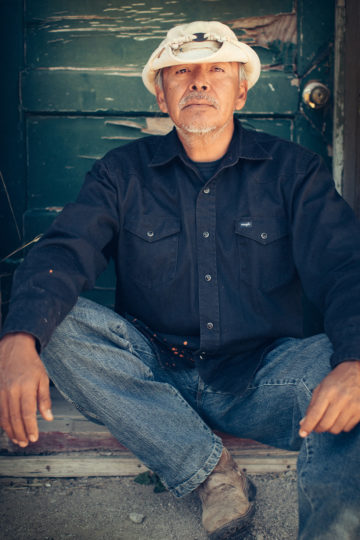
Then there’s the music. The original score by Marcus Thorne Bagala intensifies when an ETP official evades questions over the phone, and slows to a low hum when activists meet at dusk in a small office foregrounding the mountains. The score is filled with Western-style string instruments and maintains a dark, haunting mood throughout, but near the end, two performances stand apart. Terlingua-based musician Jeff Haislip plays a rendition of “Streets of Laredo,” a famous Western ballad about a cowboy dying. But this song sounds cheery compared to the finale, a banjo original by David Keller called “Funeral Song for Big Bend.” It’s a dirge, meant to evoke a droning sound, the sense of dread and inevitability felt as oil and gas infrastructure takes over Big Bend country. The song fades out into the credits, but Keller’s laughter lightens the mood: “It’s bleak,” he admits, “but you can’t stop fighting. Despite all that, you’ve got to keep fighting.”
While the Trans-Pecos Pipeline has been open for business for almost three years, the film is still timely. Plans are now being drafted for the Permian Highway Pipeline, which would be the first pipeline built through the Texas Hill Country in more than 50 years.
At the end of Trans Pecos, questions about the land itself linger. Roberto Lujan explains that native people in Texas had no concept of land ownership before Europeans colonized the continent, and instead looks to vaqueros, Mexican cowboys, who taught him to imagine Alpine’s mountain ranges as part of his community, the land a crucial symbol that connects all life. Audiences are asked to question the Texas myth, also known as the Texas miracle: Are oil and gas booms really worth the cost? What if, instead, we always saw nature as sacred, more grand and powerful and alive than any sense of proprietorship could allow?
Read more from the Observer:
-
John Cornyn Bets Big on Trump: During the impeachment proceedings, Cornyn proved that his calculation is the same as the entire GOP’s: Live with Trump, die with Trump.
-
Medicare Covered Her Medication for a Decade. Now, She Could be Spending Thousands Each Month For Migraine Relief: A federal judge in Austin recently denied a patient’s appeal asking Medicare to cover the skyrocketing cost of her prescription.
-
Gabriel García Márquez and the (Comforting) Case for Embracing Failure: A new Austin exhibit reveals how much the acclaimed Colombian writer struggled to make a living and find success.

